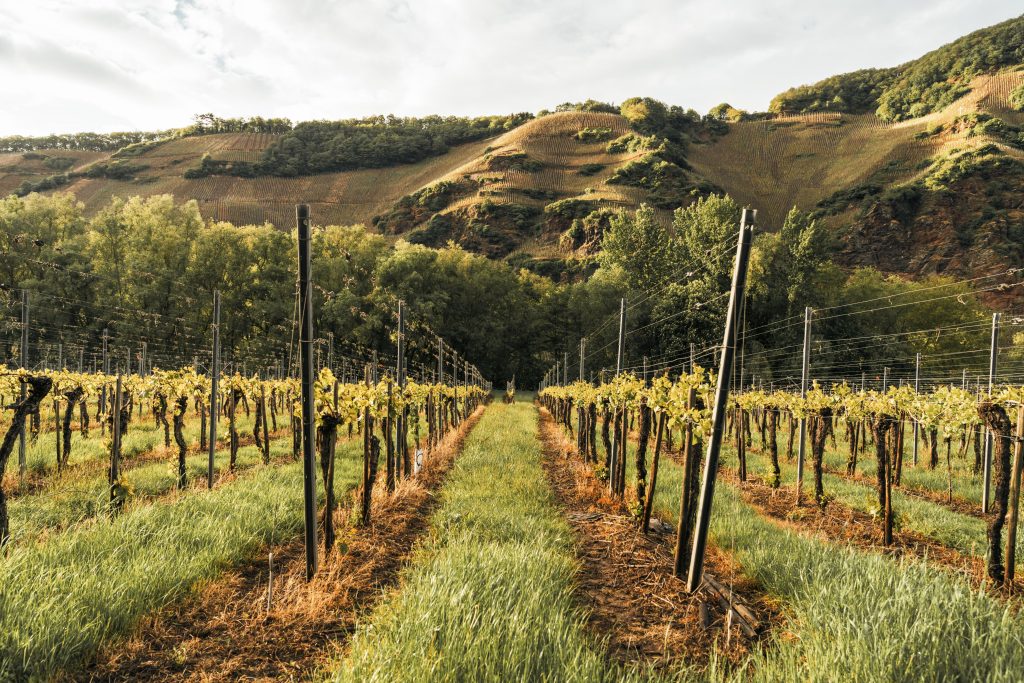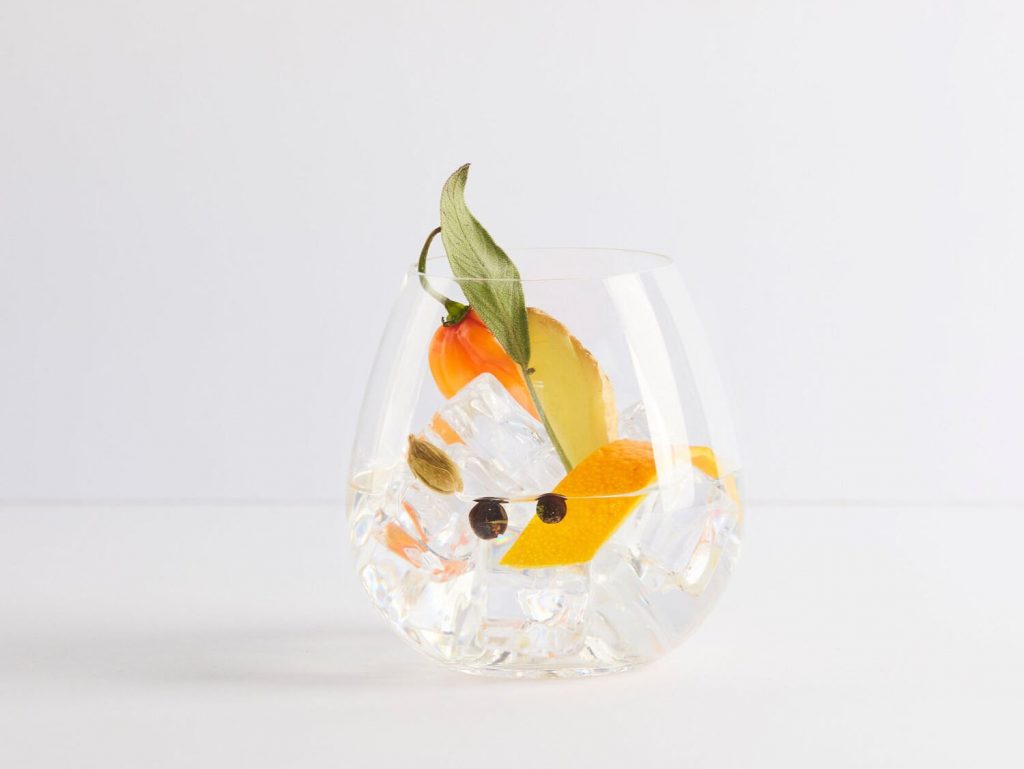Interview: Studio Null Non-Alcoholic Wine Founders Dorothy Munholland and Catherine Diao
From acclaimed family-run vineyards to dealcoholization experts, the path of the start-up’s flavorful debut portfolio

Efforts to reduce alcohol consumption do not need to cease when Dry January comes to an end. More and more consumers continue to explore non-alcoholic options (or alcohol alternatives) year round and Studio Null is the latest to introduce thoughtful products worth considering. Founded by Dorothy Munholland and Catherine Diao, Studio Null’s wines are sourced from acclaimed winemakers in Germany and Spain, then put through a leading dealcoholization process in Northern Europe that allows the liquid to retain its charm. The brand’s attention to design includes labels that use art to allude to the fact that what consumers will find in each bottle is both top-quality wine and something entirely new; that craftsmanship is at the heart of it all. Right now, Studio Null has three vine-to-glass wines on the market and more releases are in the works. To learn more about the thought, care and concern they’ve approached their brand with, we spoke to Munholland and Diao and together tasted all three of their wines.

How did this all come together? What motivated you to launch a non-alcoholic wine company?
Dorothy Munholland: Catherine and I are friends from college. We met on our freshmen year dorm floor. We both love wine and the social experiences, and the gourmand experiences that come with wine, but the last few years personally we’ve recognized that sometimes we’d like to have those experiences without the alcohol. Simultaneously, the non-alcoholic (NA) category over the last two years has exploded in the US. As the US is biggest wine-drinking country in the world, we kind of figured it was only a matter of time before a really great non-alcoholic wine entered the market here. We waited and waited and didn’t find that something really tasteful and transparent and beautiful was coming. A little over a year ago, we decided to tackle this together and try to source something that we’d be excited to drink and to serve to friends.

What has held the category back while the non-alcoholic beer market has grown so rapidly across the globe?
Catherine Diao: I think the reality of the situation with wine, and there are a few ways to make dealcoholized wine, is that it’s more difficult. If you are building a botanical concoction from the ground up that’s supposed to stand in for a non-alcoholic spirit, there’s a lot of room for experimentation and layering with juices, teas and herbs. On the beer side, you’re starting with lower ABV products usually. There’s also a longer history and a larger existing base of consumers for low- to no-ABV beer. But, on the wine side, the origin liquid is more expensive than other raw materials in the category—and the engineering and science required to remove alcohol without boiling out or flattening the complexity and character and life of wine is very difficult. There have been some advancements but now that the market demands it, the innovations are running to catch up.

Without a background in wine, what was your process for educating yourself first?
CD: Dorothy and I are both research nerds. Dorothy also comes from an amazing product development and luxury consumer goods background. Her palate is amazing. She has a great sense of aroma. And she really thinks about how to approach a problem from a product innovation perspective. That was super-helpful regarding how to set up a framework for us—to look at what was currently on the market and what the gaps were. Honestly, it helps that we do not have traditional wine backgrounds because it allowed us to be a bit more experimental. We knew where we wanted to end up.
We also did a huge competitive analysis. We conducted third-party research from wine-lovers, about their interest in the non-alcoholic category. We found that about two-thirds of the people surveyed said they would spend the same amount of money or maybe even a premium to have something that they felt was a top-quality NA alternative. It helped us understand that a lot of people were looking for this.

And do you find yourself having to educate consumers now?
DM: What we with non-alcoholic wine brands are faced with is a sort of double education. Wine already is intimidating for folks and there’s so much to understand. You can be a super-specialist in Italian reds and feel very out of your depth with a South American wine. That’s something we are trying to figure out: how to indicate where our wines are coming from. We give our consumers all the information, but we do not put it forth as a barrier for entry.
CD: This is a new category. We want it to be really inclusive. We want people to feel welcome to try it and have an opinion about it and not feel embarrassed that they don’t know where Rheinhessen, Germany is.

Can you explain how you are able to achieve this level of flavor and complexity—attributes that wine-lovers seek out?
DM: There are a few things that we are doing slightly different from our competitors. To begin with, what we’ve found is “quality in equals quality out.” Historically, some of the NA brands that have been around for the longest time (that you might find on a dusty bottom shelf) were not starting with a wine that you’d be excited to drink fully alcoholic. We spent a lot of time testing different wines and putting them through trial and error processes to select wines that are beautiful and complex on the way in.
For the dealcoholization, we partnered with experts who really understand the process and are hand-calibrating it depending on the source wine and working closely with the winemaker to understand the profile, aroma, flavor and the driving characteristics that we want to maintain on the output side.

Let’s talk about the three wines.
DM: The sparkling rosé is a blend between a Silvaner and a Portugieser, meaning it’s a little bit less traditional in that it’s a white and red grape blend. It comes from a vineyard in the Rheinhessen hills of Germany. This is a really great example of a legacy winemaking family that’s in the process of transitioning their farm to organic and hopefully biodynamic—it takes a long time to switch over. They embrace their tradition but they’re really excited to be a part of the change that’s taking place in winemaking. We wanted it to be a refreshing, palate-cleansing sparkling wine that you’d be excited to pair with something elevated for an important occasion.
For the Blanc Burgunder, it’s from another family winemaking group in Germany. Brothers hand-harvest here. It’s a Pinot Gris and Pinot Blanc blend. This area in particular is known for balancing acidity in their wines. That’s what we wanted to highlight with this one in particular: that German white wine acidity can hold up to a flavorful meal.
With the red, we find that it can use some time to breathe as with a typical full bodied red. This wine was produced by a women-led winemaking group in a dry climate in Spain. There is a lot of attention to water resources and land stewardship. That’s something we were really excited about, too. It’s a Syrah and Tempranillo blend. You’ll notice it’s called Prickly Red. We added a very, very light carbonation to it. While it’s almost imperceptible, it adds a mouthfeel that resonates a lot with people who have been looking for a non-alcoholic red. Non-alcoholic red is an area that’s been pretty polarizing for folks—but the overwhelming response to this was that people were excited to have it.
For all of these wines there was a lot of consideration of the American palate. Folks’ perception of sweetness is very different from one person to the next. What someone might consider very dry, another person might consider very sweet. We wanted to keep this on the drier side of the profile. Interestingly, Americans go for sweeter but see themselves as not wanting sweet. That was a balance we wanted to strike.

Is there an ability to scale your volume—and do you intend to release different variations each year?
CD: The limit in terms of production is not on the deacoholization side; it’s finding source wines that we love and there’s enough available to take through the process. Right now, we are excited to highlight seasonally, and year after year, different wines from different vineyards, different winemakers and different varietals. That’s something we are going to do on a smaller scale for the next few runs. As we get feedback and understand what’s hitting home, we can start partnering with winemakers who can dedicate more and more of their grapes to what we’re doing. There’s a lot of room to play with sourcing all over the world.
DM: This is just the beginning of the category and the more folks who try it—even those who maybe had a bad experience with NA wine in the past—I think the further we can continue to push it.
Hero image courtesy of Studio Null












